- Home
- Alexandre Dumas
The Count of Monte Cristo (Penguin Classics eBook)
The Count of Monte Cristo (Penguin Classics eBook) Read online
THE COUNT OF MONTE CRISTO
ALEXANDRE DUMAS was born in 1802 at Villers-Cotterêts. His father, the illegitimate son of a marquis, was a general in the Revolutionary armies, but died when Dumas was only four. He was brought up in straitened circumstances and received very little education. He joined the household of the future king, Louis-Philippe, and began reading voraciously. Later he entered the cénacle of Charles Nodier and started writing. In 1829 the production of his play, Henri III et sa cour, heralded twenty years of successful playwriting. In 1839 he turned his attention to writing historical novels, often using collaborators such as Auguste Maquet to suggest plots or historical background. His most successful novels are The Count of Monte Cristo, which appeared during 1844–5, and The Three Musketeers, published in 1844. Other novels deal with the wars of religion and the Revolution. Dumas wrote many of these for the newspapers, often in daily instalments, marshalling his formidable energies to produce ever more in order to pay off his debts. In addition, he wrote travel books, children’s stories and his Mémoires which describe most amusingly his early life, his entry into Parisian literary circles and the 1830 Revolution. He died in 1870.
ROBIN BUSS is a writer and translator who contributes regularly to The Times Educational Supplement, The Times Literary Supplement and other papers. He studied at the University of Paris, where he took a degree and a doctorate in French literature. He is part-author of the article ‘French Literature’ in Encyclopaedia Britannica and has published critical studies of works by Vigny and Cocteau, and three books on European cinema, The French through Their Films (1988), Italian Films (1989) and French Film Noir (1994). He is also part-author of a biography, in French, of King Edward VII (with Jean-Pierre Navailles, published by Payot, Paris, 1999). He has translated a number of other volumes for Penguin, including Jean Paul Sartre’s Modern Times, Zola’s L’Assommoir and Au Bonheur des Dames, and Albert Camus’s The Plague.
ALEXANDRE DUMAS (PÈRE)
The Count of Monte Cristo
Translated and with an Introduction and Notes by
ROBIN BUSS
PENGUIN BOOKS
PENGUIN BOOKS
Published by the Penguin Group
Penguin Books Ltd, 80 Strand, London WC2R 0RL, England
Penguin Putnam Inc., 375 Hudson Street, New York, New York 10014, USA
Penguin Books Australia Ltd, 250 Camberwell Road, Camberwell, Victoria 3124, Australia
Penguin Books Canada Ltd, 10 Alcorn Avenue, Toronto, Ontario, Canada M4V 3B2
Penguin Books India (P) Ltd, 11 Community Centre, Panchsheel Park, New Delhi – 110 017, India
Penguin Books (NZ) Ltd, Cnr Rosedale and Airborne Roads, Albany, Auckland, New Zealand
Penguin Books (South Africa) (Pty) Ltd, 24 Sturdee Avenue, Rosebank 2196, South Africa
Penguin Books Ltd, Registered Offices: 80 Strand, London WC2R 0RL, England
www.penguin.com
First published 1844–5
This translation first published 1996
Reissued with new Chronology and Further Reading 2003
1
Copyright © Robin Buss, 1996, 2003
All rights reserved
The moral right of the translator has been asserted
Except in the United States of America, this book is sold subject
to the condition that it shall not, by way of trade or otherwise, be lent,
re-sold, hired out, or otherwise circulated without the publisher’s
prior consent in any form of binding or cover other than that in
which it is published and without a similar condition including this
condition being imposed on the subsequent purchaser
EISBN: 978–0–141–90125–1
Contents
Chronology
Introduction
Further Reading
A Note on the Text
The Count of Monte Cristo
Notes
Chronology
1802 Alexandre Dumas is born at Villers-Cotterêts, the third child of Thomas-Alexandre Dumas. His father, himself the illegitimate son of a marquis and a slave girl of San Domingo, Marie-Cessette Dumas, had had a remarkable career as a general in the Republican, then in the Napoleonic Army.
1806 General Dumas dies. Alexandre and his mother, Elisabeth Labouret, are left virtually penniless.
1822 Dumas takes a post as a clerk, then in 1823 is granted a sinecure on the staff of the Duke of Orléans. He meets the actor Talma and starts to mix in artistic and literary circles, writing sketches for the popular theatre.
1824 Dumas’ son, Alexandre, future author of La Dame aux camélias, is born as the result of an affair with a seamstress, Catherine Lebay.
1829 Dumas’ historical drama, Henri III et sa cour, is produced at the Comédie-Française. It is an immediate success, marking Dumas out as a leading figure in the Romantic movement.
1830 Victor Hugo’s drama Hernani becomes the focus of the struggle between the Romantics and the traditionalists in literature. In July, the Bourbon monarchy is overthrown and replaced by a new regime under the Orléanist King Louis-Philippe. Dumas actively supports the insurrection.
1831 Dumas’ melodrama Antony, with its archetypal Romantic hero, triumphs at the Théâtre de la Porte Saint-Martin.
1832 Dumas makes a journey to Switzerland which will form the basis of his first travel book, published the following year.
1835 Dumas travels to Naples with Ida Ferrier (whom he will later marry), has a passionate affair in Naples with Caroline Ungher and falls in love with Italy and the Mediterranean.
1836 Triumph of Dumas’ play Kean, based on the personality of the English actor whom Dumas had seen performing in Shakespeare in 1828.
1839 Mademoiselle de Belle-Isle. Dumas’ greatest success in the theatre.
1840 Dumas marries Ida Ferrier. He travels down the Rhine with Gérard de Nerval and they collaborate on the drama Léo Burckart. Nerval introduces Dumas to Auguste Maquet who will become his collaborator on many of his subsequent works.
1841 Spends a year in Florence.
1844 The year of Dumas’ two greatest novels: The Three Musketeers starts to appear in serial form in March and the first episodes of The Count of Monte Cristo follow in August. Dumas starts to build his Château de Monte-Cristo at St-Germain-en-Laye. He separates from Ida Ferrier.
1845 Twenty Years After, the first sequel to The Three Musketeers, appears at the beginning of the year. In February, Dumas wins a libel action against the author of a book accusing him of plagiarism. Publishes La Reine Margot.
1846 Dumas travels in Spain and North Africa. Publishes La Dame de Monsoreau, Les Deux Diane and Joseph Balsamo.
1847 Dumas’ theatre, the Théâtre Historique, opens. It will show several adaptations of his novels, including The Three Musketeers and La Reine Margot. Serialization of The Vicomte de Bragelonne, the final episode of the The Three Musketeers.
1848 A revolution in February deposes Louis-Philippe and brings in the Second Republic. Dumas stands unsuccessfully for Parliament and supports Louis-Napoléon, nephew of Napoleon I, who becomes President of the Republic.
1849 Dumas publishes The Queen’s Necklace.
1850 Dumas is declared bankrupt and has to sell the Château de Monte-Cristo and the Théâtre Historique. Publishes The Black Tulip.
1851 In December, Louis-Napoléon seizes power in a coup d’état, effectively abolishing the Republic. A year later, the Second Empire will be proclaimed. Victor Hugo goes into exile in Belgium where Dumas, partly to escape his creditors, joins him.
1852 Publishes his memoirs.<
br />
1853 In November, returns to Paris and founds a newspaper, Le Mousquetaire. Publishes Ange Pitou.
1858 Founds the literary weekly, Le Monte-Cristo. Sets out on a nine-month journey to Russia.
1860 Meets Garibaldi and actively supports the Italian struggle against Austria. Founds L’Independente, a periodical in Italian and French. Garibaldi is godfather to Dumas’ daughter by Emilie Cordier.
1861–1870 Dumas continues to travel throughout Europe and to write, though his output is somewhat reduced. None the less in the final decade of his life, he published some six plays, thirteen novels, several shorter fictions, a historical work on the Bourbons in Naples and a good deal of journalism. He had a last love affair, with an American, Adah Menken, and indulged his lifelong passions for drama, travel and cookery.
1870 Alexandre Dumas dies on 5 December in Dieppe.
Introduction
‘Ah, a children’s novel,’ a Russian film-maker remarked when I told her that I was translating The Count of Monte Cristo. The comment was not intended to be disparaging, merely descriptive; and many people, in different cultures, would tend to agree with the categorization. Most will derive their idea of the novel, not from having read it, but because a kind of abstract of the storyline exists as part of the common culture: innocent man imprisoned, meets fellow-prisoner who directs him to a buried fortune, escapes and plots revenge. It has been adapted for film, television and the theatre, as well as being translated, abridged and imitated in print. It has supplied material for cartoons and comedy: the Irish comedian Dave Allen used to do a series of sketches around the theme of a young man (Dantès) breaking through a dungeon wall and encountering an old, bearded prisoner (Abbé Faria). Some events in the story are so well-known that they exist apart from the novel, like Robinson Crusoe’s discovery of Man Friday’s footprint, or incidents and characters from Treasure Island and Frankenstein. The Count of Monte Cristo is one of the great popular novels of all time and, like other popular novels, it has suffered the fate of being treated as not fully ‘adult’ fiction; like children’s fiction, it seems to inhabit a realm outside its creator’s biography and the period when it was written.
On the other hand, there are not many children’s books, even in our own time, that involve a female serial poisoner, two cases of infanticide, a stabbing and three suicides; an extended scene of torture and execution; drug-induced sexual fantasies, illegitimacy, transvestism and lesbianism; a display of the author’s classical learning, and his knowledge of modern European history, the customs and diet of the Italians, the effects of hashish, and so on; the length would, in any case, immediately disqualify it from inclusion in any modern series of books for children. Most important of all, perhaps, is the fact that the author himself never thought of this as ‘a children’s novel’. Yet already in the earliest translations into English, with their omission or subtle alteration of material that might be considered indelicate by Victorian readers, and of some passages (for example, references to classical literature) that might be thought to hold up the story, one can see the start of a process of transformation, from ‘novel’ to ‘genre novel’ – which means, ultimately, almost any kind of genre novel: ‘adventure’, ‘romance’, ‘thriller’ and, if you like, ‘children’s novel’. This is the usual fate of books that fail to meet the criteria for serious, ‘literary’ fiction.
Dumas himself must bear some of the responsibility. During his most productive decade, from 1841 to 1850, he wrote forty-one novels, twenty-three plays, seven historical works and half a dozen travel books. The nineteenth century was an age of mass production, which is precisely why Art felt the need to distinguish itself by its individuality and craftsmanship: ‘Alexandre Dumas and Co., novel factory’, was the contemptuous title given to one critical pamphlet, published at the same time as this novel, in 1845. Moreover it was known that Dumas wrote for money, at so much a line, and that he used at least one collaborator, Auguste Maquet, who would make chapter outlines for him and do research. There was a vast difference between this industrial labour and the monastic devotion to the cause of art that kept Gustave Flaubert at his desk for seven hours a day as he wrote and rewrote Madame Bovary (1857). In the history of the novel, Dumas and Flaubert stand near the head of divergent streams.
Alexandre Dumas was born on 24 July 1802; or, rather, since the Republican Calendar was still in force, on 5th Thermidor, Year x, in the little town of Villers-Cotterêts, near Soissons. His father was a general in the revolutionary armies, himself the illegitimate son of a marquis, Antoine-Alexandre Davy de la Paillerie, and a black slave from the island of Santo Domingo, Marie Dumas. In 1806, General Dumas died, leaving his family virtually without resources. The child had little education, enough however to allow him to read Robinson Crusoe and The Arabian Nights, and to cultivate his handwriting. In 1823, thanks to the second of these, he found employment in Paris, copying documents for Louis-Philippe, Duke of Orléans.
The 1820s were a marvellous time for an aspiring young writer in Paris. The two rival literary ideologies, of Classicism and Romanticism, were engaged in a mock-heroic combat for the soul of French literature. Classicism stood for universal themes, refinement, purity of language, clear division of literary genres and (despite its debt to the literature of the classical world) the peculiarly French ethos of the dramatist Racine. Romanticism meant energy, modern subject-matter, mixing genres and openness to foreign influences, particularly that of Shakespeare, the Romantic dramatist par excellence. It was in the theatre that the confrontation would chiefly take place.
Racine had based his plays on stories from classical Greece or on biblical history, both of which offered ‘universal’ events and characters. Shakespeare, like the German playwright Schiller, had dealt with subjects from modern history, which were national and particular rather than universal. In France, especially, the period that followed the great upheavals of the Revolution, the Empire and the Restoration was one which had an urgent need to make sense of the past. Shakespeare’s history plays – and, still more, the historical novels of Walter Scott – were models of how this could be done, drawing on the imagination as well as on scholarship. In 1828, Dumas, who had already tried his hand at a couple of plays and some short stories, submitted a historical drama to the Comédie Française entitled Henri III et sa cour. It was a typically Romantic work, ignoring the ‘unities’ of time, place and action, and written in prose, rather than the conventional medium of verse. It underwent the usual ritual of a public reading and, at its first night on 10 February 1829, scored a triumphant success and was warmly applauded by the author’s employer, Louis-Philippe. In the following year, Louis-Philippe became king, after a liberal revolution that was supposed to bring in a constitutional monarchy. Dumas welcomed it; so did the former ultra-monarchist, Victor Hugo.
During the next twenty years, Dumas was (with Hugo and Alfred de Vigny) the leading dramatist of the new movement – and, of the three, easily the most prolific. Perhaps too much so: overnight, after the first performance of Christine in 1830, while Dumas was asleep, Hugo and Vigny rewrote the play, reducing it to a more manageable size. Despite this, Dumas’ play Antony (1831) is an essential work of the Romantic period, as representative as Hugo’s Hernani or Vigny’s Chatterton, and more successful with its audiences than either. But the theatre is the very opposite of a monastic cell or an ivory tower. Collaboration is not only the norm, but inevitable, feedback from the public is instantaneous, work has to be produced to satisfy demand, and there is an immediate relationship between the author’s output and what comes in through the box office. In the theatre, Dumas learned the rudiments of literary production.
On one occasion, Charles-Jean Harel, director of the Odéon theatre, is supposed to have locked Dumas into a room, away from his mistress, for a week, until he had completed the manuscript of Napoléon (1831). The huge growth in the periodical press during the 1820s saw the invention of the feuilleton – not in the sense of a regular column by one wri
ter, but of a novel published in instalments; Dumas claimed to have invented the roman feuilleton with La Comtesse de Salisbury, published in La Presse in 1836. By the early 1840s he was writing more novels than plays, mainly (but by no means exclusively) historical fiction which, as I have already mentioned, was one of the most popular genres; it was also taken seriously as a means of exploring the past. He did, incidentally, write a book for children at this time: Le Capitaine Pamphile (1839).
Travel, to which he was addicted, helped to stave off boredom, providing the material for travel books, while translation filled in the remaining gaps in the working day. Like Balzac, he was a man of huge appetites: food, sex, work, sleep, pleasure, leisure, movement, excitement. In Italy, he found love, opera, colour and the Mediterranean: he visited Naples and Palermo in 1835, stayed a year in Florence in 1841 and returned in 1843 for a visit that included Sicily. The following year saw the publication of his first great historical novel, Les Trois Mousquetaires/The Three Musketeers, and on 28 August 1844 Le Journal des Débats began publication of The Count of Monte Cristo. It was an immediate success, translated, adapted, pirated… in short, a popular novel.
It was also, very clearly, a work of its time. The plot was inspired by the true-life story of François Picaud, which Dumas found in Jacques Peuchet’s Police dévoilée: Mémoires historiques tirés des archives de Paris… (1838), a collection of anecdotes from the Parisian police archives.1

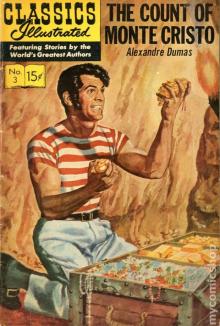 The Count of Monte Cristo, Illustrated
The Count of Monte Cristo, Illustrated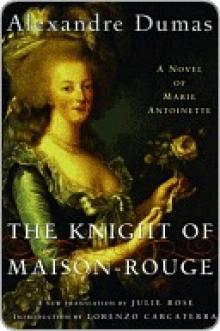 Knight of Maison-Rouge
Knight of Maison-Rouge![The Three Musketeers - Alexandre Dumas - [Full Version] - (ANNOTATED) Read online](http://i1.bookreadfree.com/14/the_three_musketeers_-_alexandre_dumas_-_[full_version]_-_annotated_preview.jpg) The Three Musketeers - Alexandre Dumas - [Full Version] - (ANNOTATED)
The Three Musketeers - Alexandre Dumas - [Full Version] - (ANNOTATED)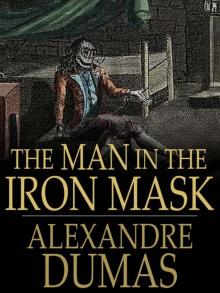 The Man in the Iron Mask
The Man in the Iron Mask The Count of Monte Cristo (Penguin Classics eBook)
The Count of Monte Cristo (Penguin Classics eBook)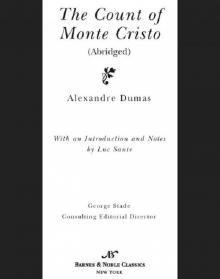 Count of Monte Cristo (abridged) (Barnes & Noble Classics Series)
Count of Monte Cristo (abridged) (Barnes & Noble Classics Series) The Women's War
The Women's War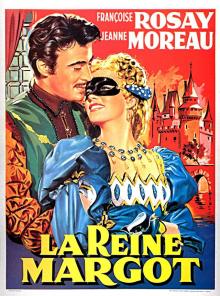 La reine Margot. English
La reine Margot. English The Vicomte de Bragelonne
The Vicomte de Bragelonne__english_preview.jpg) La dame aux camélias (Novel). English
La dame aux camélias (Novel). English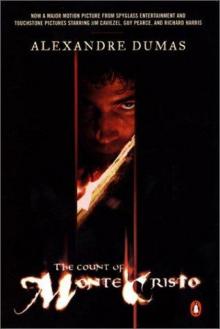 The Count of Monte Cristo
The Count of Monte Cristo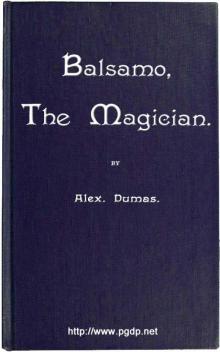 Balsamo, the Magician; or, The Memoirs of a Physician
Balsamo, the Magician; or, The Memoirs of a Physician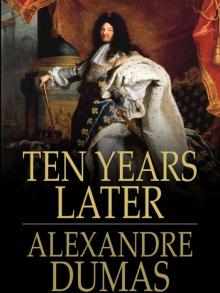 Ten Years Later
Ten Years Later The Romance of Violette
The Romance of Violette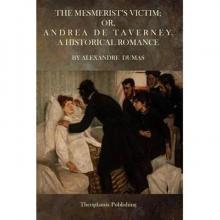 The Mesmerist's Victim
The Mesmerist's Victim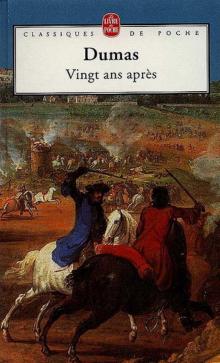 Vingt ans après. English
Vingt ans après. English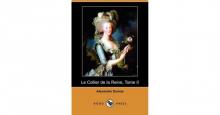 Le collier de la reine. English
Le collier de la reine. English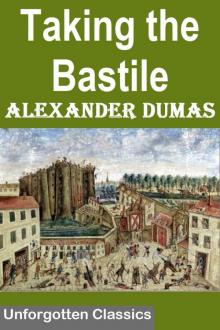 Taking the Bastile; Or, Pitou the Peasant
Taking the Bastile; Or, Pitou the Peasant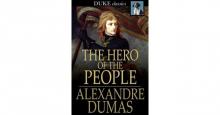 The Hero of the People: A Historical Romance of Love, Liberty and Loyalty
The Hero of the People: A Historical Romance of Love, Liberty and Loyalty Louise de la Valliere
Louise de la Valliere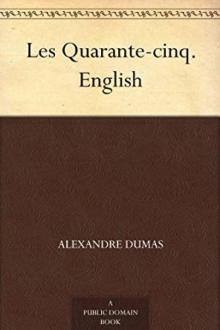 Les Quarante-cinq. English
Les Quarante-cinq. English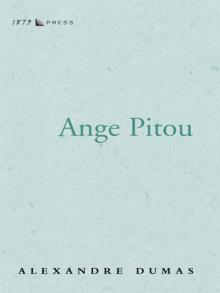 Ange Pitou (Volume 1)
Ange Pitou (Volume 1)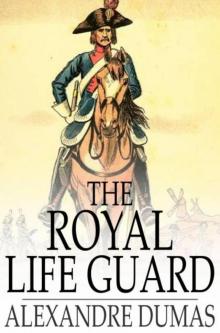 The Royal Life Guard; or, the flight of the royal family.
The Royal Life Guard; or, the flight of the royal family.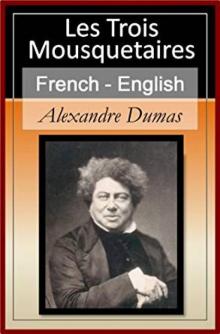 Les trois mousquetaires. English
Les trois mousquetaires. English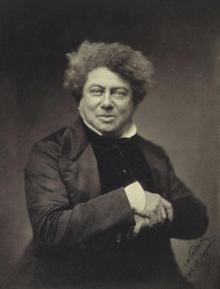 Une fille du régent. English
Une fille du régent. English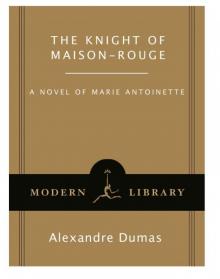 The Knight of Maison-Rouge
The Knight of Maison-Rouge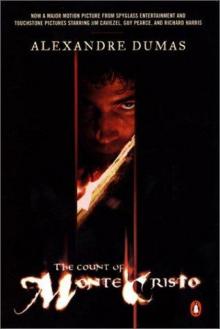 The Count of Monte Cristo (Unabridged Penguin)
The Count of Monte Cristo (Unabridged Penguin) Ange Pitou
Ange Pitou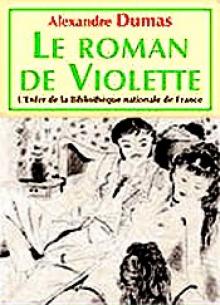 The Romance of Violette (vintage erotica)
The Romance of Violette (vintage erotica)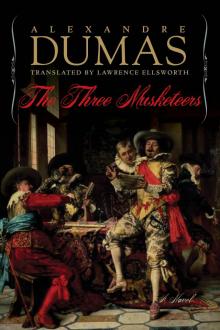 The Three Musketeers
The Three Musketeers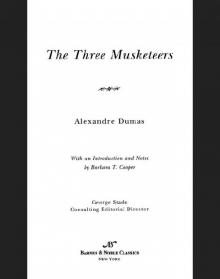 Three Musketeers (Barnes & Noble Classics Series)
Three Musketeers (Barnes & Noble Classics Series)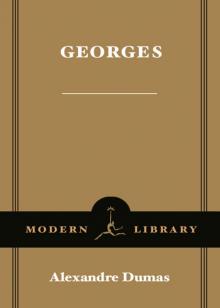 Georges
Georges Man in the Iron Mask (Barnes & Noble Classics Series)
Man in the Iron Mask (Barnes & Noble Classics Series)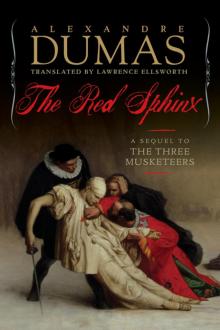 The Red Sphinx
The Red Sphinx